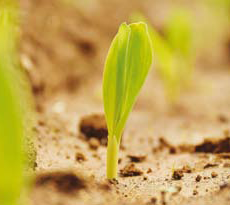Corteva Agriscience: ESCA Growth Journey Continues
Corteva Agriscience™, the US based pure play agriculture company, has set up its East South Central Africa (ESCA) Commercial Unit headquarters in Nairobi. ESCA is a priority growth market with business presence in Ethiopia, Tanzania, Kenya (which supports Great Lakes), Zambia, Malawi, Mozambique and Zimbabwe. The success of Corteva in the region is a result of well positioned research and seed production facilities in Zambia, Zimbabwe, Kenya and Ethiopia. Joseph Anampiu serves as Commercial Unit leader for ESCA, supported by a strong team of Country Leaders.
 Briefly discuss Corteva Agriscience
Briefly discuss Corteva Agriscience
Corteva Agriscience is a leading global agriculture company. The company combines over two centuries of scientific achievement and agronomic expertise to African agriculture to provide farmers with the right mix of seeds, crop protection and digital solutions to maximize their yields and improve their profitability.
Corteva is headquartered in the U.S., with headquarters for Africa Middle East regional in Centurion, South Africa. Africa & Middle East has 4 Commercial Units with main offices in South Africa (Centurion), Morocco (Casablanca), Kenya (Nairobi) and Egypt (Cairo) acting as business centres for Southern Africa, North West Central Africa, East Africa and Egypt Middle East respectively.
 The end of 2014 brought the conclusion of the African Union’s Year of Agriculture and Food Security.
The end of 2014 brought the conclusion of the African Union’s Year of Agriculture and Food Security. Ten months after it was exposed how a cartel-inspired fertiliser standard was put in place, the government has begun rectifying the multibillion-shilling policy mistake even as the syndicates fight back.
Ten months after it was exposed how a cartel-inspired fertiliser standard was put in place, the government has begun rectifying the multibillion-shilling policy mistake even as the syndicates fight back. Food security requires a vibrant, commercial and modern agricultural sector that sustainably supports Kenya’s own economic development and national priorities.
Food security requires a vibrant, commercial and modern agricultural sector that sustainably supports Kenya’s own economic development and national priorities. With a rapidly growing population, food demands are increasing pressure on the fixed and dwindling land resource, not to mention the rising degradation of the environment coupled with uncertainties resulting from climate change.
With a rapidly growing population, food demands are increasing pressure on the fixed and dwindling land resource, not to mention the rising degradation of the environment coupled with uncertainties resulting from climate change.